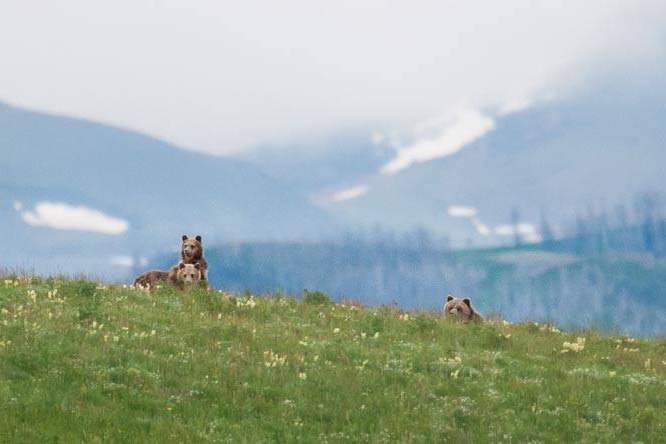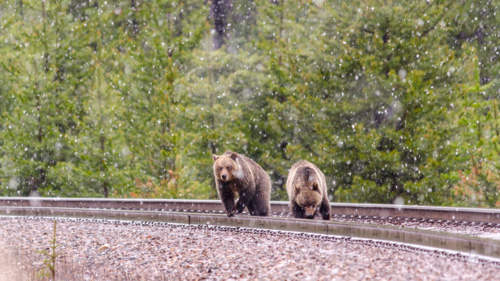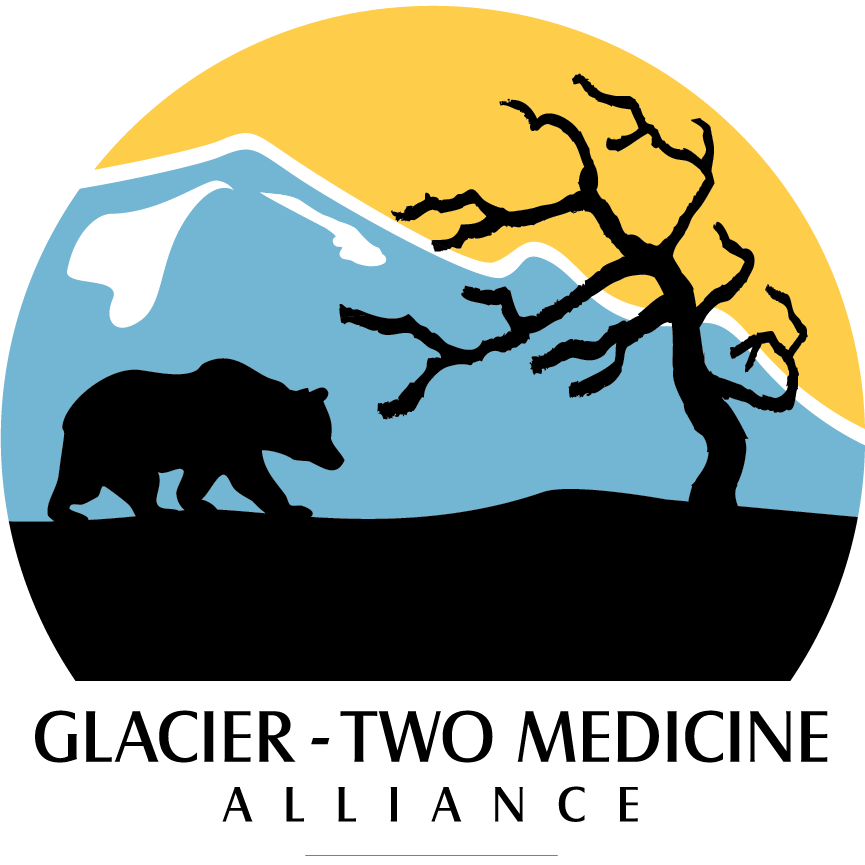Comment on the draft Statewide Grizzly Bear Management Plan
Montana FWP has re-opened public comment on the plan.
Comments due March 9th.
Montana Fish, Wildlife and Parks is currently seeking public comments on its proposed statewide grizzly bear management plan and accompanying draft environmental impact statement (EIS). If approved, this plan will guide the state’s grizzly bear management both while grizzly bears remain protected under the Endangered Species Act as well as after federal protections have been removed, should that occur during the life of this plan.
Unfortunately, this plan fails to utilize the best available science to ensure careful population stewardship and promote the long-term, sustained recovery of grizzly bears. Rather than truly build on FWP’s proven track record of excellence and innovation in minimizing conflicts and fostering coexistence, the plan directs FWP to change direction and take a more aggressive approach to conflict response, which will lead to too many grizzly bears being killed or relocated, ironically undermining the plan’s stated commitment to grizzly bear recovery and delisting. It also places way too much emphasis on grizzly bear hunting as a post-delisting management tool, with questionable biological and social assumptions used to justify the hunt.
How to access the plan:
The draft plan, environmental impact statement and accompanying documents are available from Montana FWP’s website.
Where to submit comments:
Submit your comments on the draft plan and deis before March 9, 2024 via email to fwpwld@mt.gov, using this online form, or by mail to:
Montana Fish, Wildlife & Parks
P.O. Box 200701
Helena, MT 59620-0701
Suggesting talking points are listed below.
Your comments are needed to improve the final version of the plan. Please submit comments by Saturday, March 9!

Points to include in your comments:
Our Wildlife Working Group – a team of knowledgeable local wildlife advocates, policy experts, and retired grizzly bear professionals – has taken a deep dive into the plan and draft EIS suggests emphasizing the following points in your comments (keep reading for further explanation for each issue):
-
Recognize the Importance of Grizzly Bears
Grizzly bears are a highly valued wildlife species for most Montanans, important to our state’s cultures (including various tribal and non-tribal communities), heritage, environment, and economy. Grizzly bears should be managed according to public trust principles and the best-available science in order to promote their long-term recovery and persistence in Montana and the northern Rockies, and not primarily, as this plan’s tone and content indicates, for the small minority of Montanans who want to see grizzly bears hunted or otherwise view grizzly bears as a problem. -
Conduct Tribal Consultation and Coordination
Prior to finalizing this plan, FWP needs to consult with tribal nations and incorporate their perspectives, something FWP unfortunately has not done yet. The Plan should provide clear guidance for FWP to prioritize continued consultation and coordinated management with tribal governments post-delisting, including monitoring mortality and population trends. It should also layout how FWP plans to engage tribal governments and respect their priorities for grizzly bear management within their traditional territory moving forward, including potential opposition to grizzly bear hunts should it be expressed. -
Science-based Population Stewardship
FWP should estimate and monitor grizzly bear populations wherever grizzly bears may be present, especially in connectivity zones, rather than just in current demographic monitoring areas. It should reiterate its commitment to manage for “a stable to increasing grizzly bear population” in the Northern Continental Divide Ecosystem, consistent with the current conservation strategy, as well as to integrate DNA sampling into its population models to improve their accuracy. All population estimates, population trend, and annual mortality data should remain publicly available. -
Prioritize Education and Conflict Prevention Work
Grizzly bear management both now and post-delisting, should it occur, should continue to prioritize improving the ability of people to coexist successfully with grizzly bears through public education, conflict prevention, and, to the maximum extent possible, non-lethal conflict response efforts. Such work should occur anywhere grizzly bears may be present, and not limited to current core areas and connectivity zones as the plan currently indicates. FWP should continue, as the plan suggests, to work with NGOs, affected communities, landowners, and other groups to further education and conflict minimization work. To improve transparency and accountability, the plan needs to clarify the criteria for when a grizzly bear may be lethally removed. -
Foster Demographic and Genetic Connectivity
The plan should direct FWP to foster natural demographic and genetic connectivity between grizzly bears in Greater Yellowstone and northwest Montana as well as to further the natural recovery of a grizzly bear population in the Bitterroot Ecosystem. Management actions would include prioritizing education and conflict prevention work before conflicts occur, improving habitat security on public and private lands, releasing conflict-free bears periodically into connectivity areas, and establishing occupancy standards for these in between landscapes sufficient to ensure both male and female bears can move between core populations and recovery zones. -
Grizzly Bear Hunting is Premature
Hunting grizzly bears is not necessary to manage the population, is unlikely to reduce human-bear conflicts, and will generate far more social controversy and animosity toward FWP than any goodwill it may create with some landowners and hunters. No hunting should ever occur in areas with low grizzly bear population density such as connectivity zones, near the boundaries of national parks, or on tribal sacred lands where a tribe has requested no hunting. Hunting of bears in groups or bears in dens, as the plan presently permits, is unethical, inappropriate and should never be allowed. To build trust and demonstrate its capacity to manage a recovered bear population without federal oversight and funding, FWP should commit to no hunting during the required 5-year post-delisting monitoring period. -
Allow Natural Range Expansion
Grizzly bear distribution and range should not be determined by politics but rather by biologically suitable habitat. Grizzly bears should be allowed to naturally expand into, and remain in, central and eastern Montana, especially on public lands like the CMR Wildlife Refuge or Missouri River Breaks National Monument, as well as into other currently unoccupied (or lightly populated) areas of Montana, particularly if they remain conflict-free. While their presence undoubtedly creates new challenges for landowners, communities, and grizzly bear managers, it is possible for these challenges to be managed in a manner that allows grizzly bears to live in these areas. Rather than encourage removal and relocation, as this plan does, FWP should proactively work with affected communities and individuals to improve the likelihood grizzly bears can persist in these areas, at least at low densities.
For your comments to carry the most weight, please be sure to craft them in your own words. Be as specific, substantive, and personal as you can be. However, don’t sweat it. Any comments that speak up for grizzly bears are better than agonizing over the perfect ones.
Thank you for taking the time to help protect and recover grizzly bears by comments on this plan. It makes a difference!
Want more suggestions? Email Peter at peter@glaciertwomedicine.org for a more complete list of our suggested comments.

